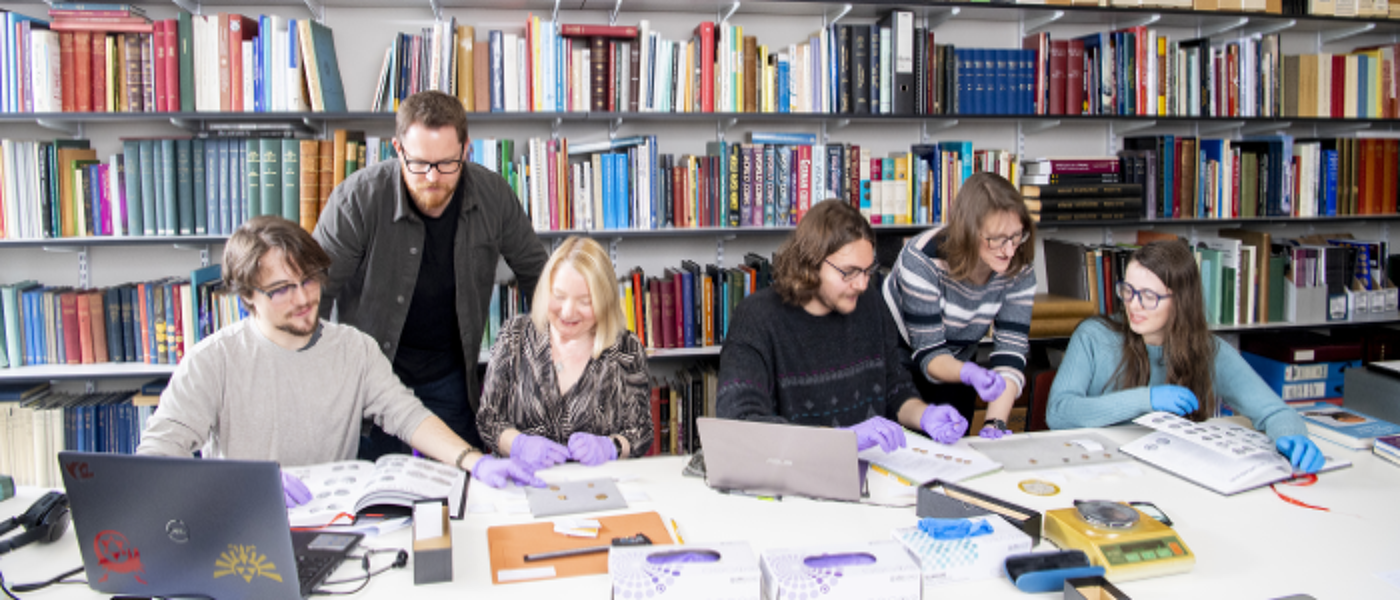Equal Pay & Equality Pay Gap Reporting
Our World Changers Together strategy outlines our ambitions to remain a world class, transformative University, with our people at the heart of everything we do. It reaffirms our commitment to attract exceptional talent and to developing, empowering, and rewarding colleagues aligned with our core values and their contributions to our success.
We aim to attract the brightest minds from around the globe to join Glasgow’s expanding international academic community. We draw strength from one another and inspiration from the diverse people, societies, and city we serve. Our unified community of staff, students and alumni work together as one Glasgow, driven by a shared commitment to making a positive impact on the world.
This report reiterates our dedication to taking meaningful action to address pay related equality gaps. It reflects the University’s determination to be a leading force in this critical area, enhancing our employer of choice aspirations whilst also supporting our efforts to attract and retain the best talent.
Our pay and reward structures are built upon a systematic and analytical approach to job evaluation. They are designed to assess the relative value of roles in a consistent, transparent, and equitable manner. This, alongside the introduction of professorial zoning and banding at senior executive levels several years ago, is consistent with our ongoing actions to narrow the gender pay gap across the University. We remain fully committed to addressing the underlying factors influencing our gender pay gap, appreciating that even small changes often result in significant improvements.
We regularly report and analyse pay gap data in relation to ethnicity and disability in line with our institutional commitment to becoming an anti-racist and inclusive institution.
A range of actions are in place to address current pay gaps, aligned with the key themes of our People and Organisational Development Strategy 2020-2025: Living Our Values, Maximising Organisational Capability, and Enhancing Employee Experience. These themes equally support the overarching goals of the University’s World Changers Together strategy.
Defining Equal Pay and Gender Pay Gap
The University has reported on both our Equal Pay Statement and the Gender[1] Pay Gap since 2013, in accordance with the legislative provisions of the Equality Act 2010[2]. In 2017, the University began reporting on both Equal Pay and Pay Gaps for ethnicity, and disability.
It is of note that ‘equal pay’ and ‘gender pay gap’ are distinct legal concepts which similarly apply to ethnicity and disability.
Equal Pay legislation prohibits any less favourable treatment between women and men in their terms and conditions of employment. The Equality Act 2010 gives both women and men the right to equal pay for equal work, with women and men being legally entitled to be paid at the same rate for like work, work rated as equivalent, and work of equal value.
Guidance published by the Equality and Human Rights Commission (EHRC) describes percentage differences that fall outwith 95-105% i.e. +/-5% as constituting a statistically significant difference in pay. Gaps of over 5% require to be investigated and acted upon while gaps that exceed 3% may also warrant further investigation where a pattern or a trend emerges, for example, where all or most of the differences are in favour of one sex.
The (Gender) Pay Gap is the average difference between the aggregate hourly earnings of men and women. Factors such as age, educational background, organisational size, the availability of part-time work and occupational segregation contribute to the existence and extent of the (gender) pay gap.
The census date for pay and demographic data informing these analyses is 31 September 2024, unless otherwise stated.
[1] ‘Gender’ here in fact refers to the protected characteristic of ‘Sex’. The language used throughout this paper and the University’s pay reporting reflects the language used in the Equality Act 2010 and associated equality duties.
[2] Equality Act 2010 (Specific Duties) (Scotland) Amendment Regulations 2016
What is the difference between mean and median figures?
The median pay gap is the difference between the midpoints in the ranges of hourly earnings of men and women. It takes all salaries in the sample, lines them up in order from lowest to highest, and picks the middle salary. We believe this is a more representative measure of the pay gap at the University because it is not affected by outliers – a few individuals at the top or bottom of the range.
The mean gender pay gap is the difference between the average hourly earnings of men and women.
Tackling Equality Pay Gaps
The University is committed to equitable support and progression for colleagues across our workforce. Actions in place to tackle and address our equality pay gaps reflect our strategic values and KPIs. Achieving strategic KPI targets for equality, diversity and inclusion will contribute to improving representation of women, our UK Minority Ethnic and disabled colleagues across our population, particularly at senior levels. We will enact this through enhanced talent attraction and management strategies with a view to addressing and improving our performance with regards to our pay equality gaps.
We have seen positive progress towards our KPIs since our previous report in 2022 and continue to strive for further improvement:
- The proportion of women in senior professional and professorial roles has increased by 1.2% to 35.0%
- Declared disability has increased from 6.8% to 9.2% of our colleague population.
- UK Black, Asian and Minority Ethnic (‘Minority Ethnic’) representation is up from 5.7% to 6.7% with the percentage of Minority Ethnic colleagues having increased to c.19%.
The University has implemented targeted actions and programmes of work to better attract, nurture and retain diverse talent towards addressing underrepresentation and occupational segregation, thus improving our equality pay gaps.
Improving inclusion across recruitment processes:
- As part of the University’s ongoing commitment to strengthen our employer brand, attract global talent, and position ourselves as an employer of choice, we have launched a new recruitment platform. This enables us to profile our values and enhance the level of information that we are able to share with regards to our inclusive community to prospective candidates. The new platform is accompanied by updated guides and resources, including standardised job descriptions, alongside enhanced Recruitment and Selection training, thereby strengthening consistency in our approach to recruitment and ensuring an equitable candidate experience.
- As part of our Diversity in Recruitment initiative, we have fully completed the data collection and analysis phases, mapping the candidate journey to identify barriers to conversion of applications to appointments for Minority Ethnic candidates. We are currently in the process of working with College and Services Management Groups to identify and implement appropriate actions to address specific challenges.
Enhancing career pathways and progression:
- The University is providing supportive and transparent career progression mechanisms through its introduction of a new Career Framework for Professional Services Colleagues. This development will contribute to addressing issues such as occupational segregation that has influenced our gender pay gap with a particular emphasis on roles based within and across our professional services functions. The framework will be instrumental in ensuring that colleagues, especially those from underrepresented groups, have equitable advice, access to appropriate tools and support to drive and develop their careers at the University.
- The University continues to support women’s leadership development and progression to senior professional and professorial roles through positive action interventions, such as the Aurora Leadership Programme for Women in HE.
- Continued promotion and support of our award-winning James McCune Smith PhD Scholarships for UK Black students to support the R&T ‘pipeline’.
- The University plans to address EDI-related findings for the forthcoming REF informed by the Equality Impact Assessment (EIA) for the previous exercise, specifically the need to address issues identified with respect to the career journey of our Minority Ethnic researchers towards research independence. Actions emerging from a follow-on project, which qualitatively explored Minority Ethnic researchers’ experiences, will be implemented throughout the next reporting cycle.
Embedding our values across the employee experience:
- Our inclusive University community for colleagues will be advanced and improved upon in terms of our disabled colleague experience through a dedicated action plan, developed in collaboration with disabled colleagues. The action plan tackles issues relating to onboarding, induction, working environment and intersects with key areas of career development and progression.
Continually improving our data:
- We have experienced significant success through ongoing practice of 6-monthly campaigns to increase colleague disclosure rates across all protected characteristics, particularly ethnicity and disability, to support meaningful, data-led, analyses of pay equality gaps.
These are outlined in our Equality Monitoring Report for AY2023-24, in relation to which we will continue our efforts to improve our data and enhance our analysis and confidence in our pay gap reporting.

Gender Pay Gap

Ethnicity Pay Gap



